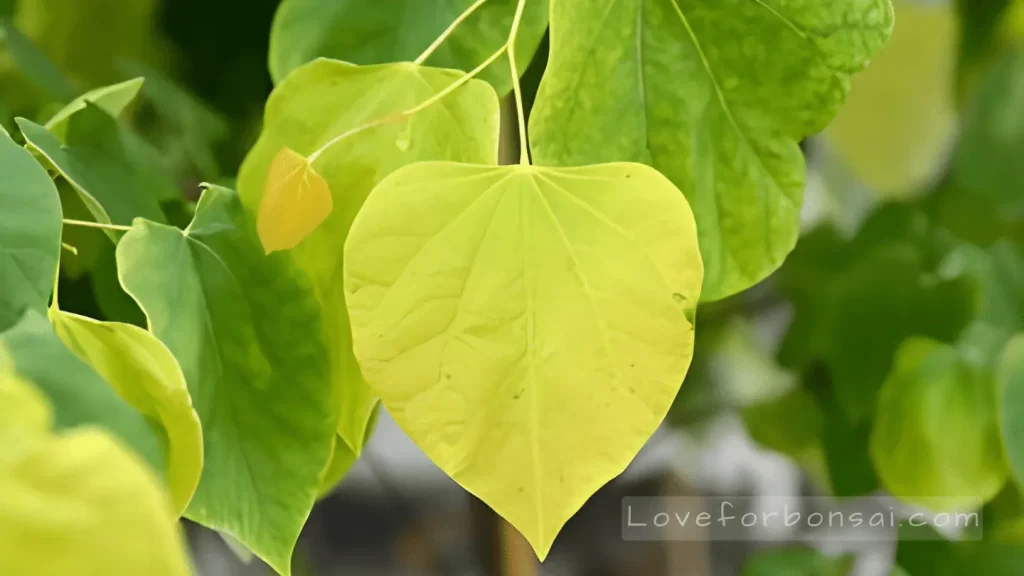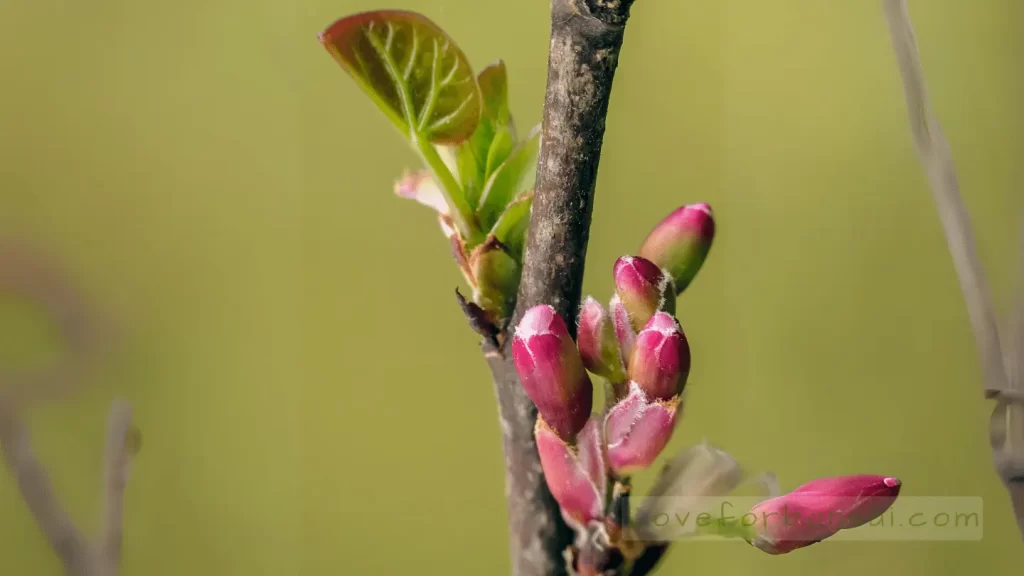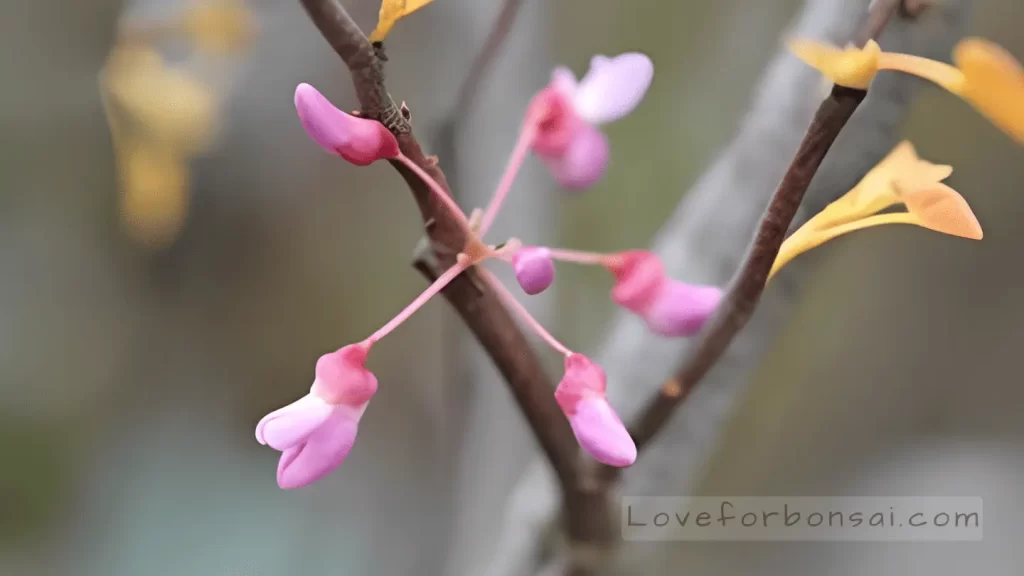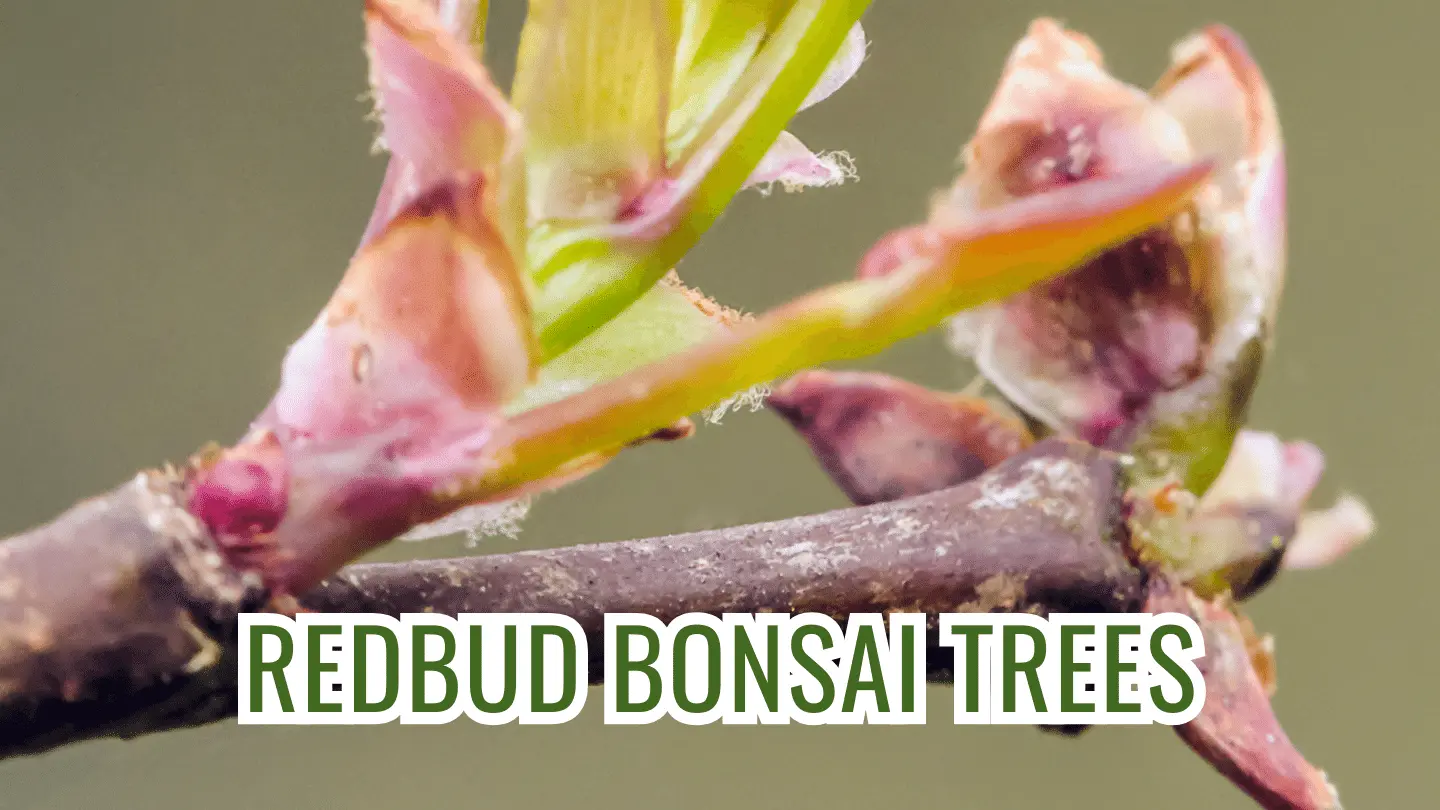Bonsai trees are a captivating form of art and nature combined, offering miniature versions of the grand trees that dot our landscapes. Among the diverse species that can be transformed into bonsai, the Redbud stands out as a unique and enchanting choice.
In this comprehensive guide, we will explore the world of Redbud bonsai trees, from their characteristics and care to the intricacies of pruning and repotting. Whether you are a novice or an experienced bonsai enthusiast, you are sure to find valuable insights in this article.
Understanding Redbud Bonsai
The Redbud (Cercis), a member of the pea family (Fabaceae), is a deciduous tree known for its heart-shaped leaves and stunning pink or purple flowers that bloom on bare branches in the spring.
This tree species can be found in various parts of North America and is well-loved for its ornamental value in landscapes. Translating this beauty into the art of bonsai is a rewarding endeavor.
| Variety | Scientific Name | Key Features | Typical Use Cases |
|---|---|---|---|
| Eastern Redbud | Cercis canadensis | Heart-shaped leaves, pink flowers, adaptable to various climates | Heart-shaped leaves, pink flowers, and adaptable to various climates |
| Chinese Redbud | Cercis chinensis | Smaller leaves, abundant flowers, frost-sensitive | Ideal for detailed bonsai work, requiring protection in colder regions. |
| Texas Redbud | Cercis canadensis var. texensis | Drought-resistant, bright pink blooms, twisted trunks | Best for arid environments, used in bonsai to highlight rugged aesthetics |

Can You Make Bonsai out of Redbud Trees?
Yes, it is possible to create a bonsai tree from Eastern Redbud (Cercis canadensis) trees. However, there are some important considerations and challenges to keep in mind when working with Redbud trees for bonsai:
- Leaf Size: Redbud trees typically have larger leaves, which can be a challenge for bonsai aesthetics. It may require leaf reduction techniques to create a balanced and proportional look.
- Flowering: Redbuds are known for their beautiful spring flowers, which can be a highlight of the bonsai. However, ensuring consistent flowering in a bonsai setting can be difficult.
- Longevity: Redbud trees can live for several decades, and their growth rate can be slow. This means that developing a Redbud bonsai into a mature and impressive specimen may take many years of patient cultivation.
- Pruning and Training: Regular pruning and training are essential to shape the Redbud bonsai into the desired form. Wiring and selective pruning can help achieve the desired branch structure.
- Pot Selection: Choose an appropriate bonsai pot that complements the tree’s style and size. The pot should also provide good drainage.
- Soil and Watering: Use well-draining bonsai soil to prevent waterlogged roots. Water the Redbud bonsai carefully to maintain proper moisture levels.
- Overwintering: Depending on your local climate, you may need to protect your Redbud bonsai from harsh winter conditions. Some varieties of Redbud are more cold-hardy than others.
- Repotting: Repotting should be done periodically to refresh the soil and maintain the health of the bonsai. Redbud bonsai should be repotted in the spring.
No products found.
Creating a Redbud bonsai can be a rewarding endeavor, but it requires dedication, patience, and a good understanding of bonsai techniques. It’s essential to research and plan carefully before starting the project, and consider seeking guidance from experienced bonsai enthusiasts or joining a local bonsai club for additional support and knowledge.
Characteristics of Redbud Bonsai

Redbud bonsai trees possess several notable characteristics that make them a fascinating choice for bonsai enthusiasts:
- Leaves: The Redbud’s leaves are typically heart-shaped, which adds a unique aesthetic element to the bonsai design. They vary in size and can provide interesting visual texture.
- Flowers: When in bloom, Redbud bonsai trees dazzle with an array of pink or purple flowers. These blossoms appear directly on the branches before the leaves emerge, creating a stunning spectacle.
- Trunk: The trunk of a Redbud bonsai can thicken and develop distinctive texture over time, contributing to the overall beauty of the tree.
- Bark: The bark of mature Redbud trees can exhibit an attractive and visually appealing pattern, enhancing the tree’s aesthetic value.
The Art of Redbud Bonsai Care
Caring for a Redbud bonsai tree requires attention to various aspects, including sunlight, watering, and fertilization.
Sunlight
Redbud bonsai trees thrive in full sun or partial shade. When placing your Redbud bonsai outdoors, ensure it receives adequate sunlight for at least six hours a day. If you are growing it indoors, providing supplementary lighting with grow lights is essential to mimic natural sunlight.
Watering
Proper watering is crucial for the health of your Redbud bonsai. Keep the following tips in mind:
- Consistency: Maintain a consistent watering schedule, allowing the soil to dry slightly between waterings. Avoid overwatering, as this can lead to root rot.
- Soil Check: Before watering, check the soil’s moisture level by inserting a finger about an inch into the soil. Water when the top layer feels dry.
- Water Quality: Use distilled or rainwater if possible, as Redbud bonsai trees can be sensitive to chlorine and other chemicals found in tap water.
Fertilization
Fertilizing your Redbud bonsai is essential to ensure it receives the necessary nutrients for healthy growth. Use a balanced, water-soluble fertilizer during the growing season (spring to early autumn) every two to four weeks. Reduce or cease fertilization during the dormant winter months.

Pruning and Shaping Your Redbud Bonsai
Pruning is a fundamental aspect of bonsai art, and Redbud bonsai trees offer exciting opportunities for creativity and design.
Pruning Techniques
- Regular Pruning: To maintain the desired shape and size of your Redbud bonsai, engage in regular pruning. Focus on removing dead or overgrown branches to encourage healthy growth.
- Pinching: Pinching involves removing the tips of new growth with your fingers. This technique promotes ramification and the development of finer branches.
- Defoliation: Defoliation, the removal of leaves during the growing season, can help reduce leaf size and encourage back-budding, where new shoots form closer to the trunk.
Wiring and Shaping
Wiring is a valuable technique for shaping your Redbud bonsai. Here are some steps to follow:
- Select the Right Wire: Choose aluminum or copper wire of an appropriate thickness for the branch you wish to shape. Avoid wire that is too thin, as it may not hold the branch in place.
- Wire Placement: Wrap the wire around the branch gently but firmly, ensuring it does not cut into the bark. Position the wire at a 45-degree angle to the branch, spiraling it along the desired path.
- Monitor Growth: Regularly inspect the wired branches and adjust the wire as needed to maintain the desired shape. Remove the wire once it has served its purpose, typically after a few months.
Repotting Your Redbud Bonsai
Repotting is a vital aspect of bonsai care that rejuvenates the tree and promotes its overall health and growth.
When to Repot
Repotting your Redbud bonsai should be done when the following conditions are met:
- Rootbound: When the roots have filled the pot to the point where they are tightly packed and circle the root ball.
- Growth Stagnation: If you notice that the tree’s growth has slowed, and the soil has become depleted of nutrients, it may be time to repot.
- Every Few Years: Generally, Redbud bonsai trees benefit from repotting every two to three years, although the specific timing can vary based on growth rates and pot size.
Repotting Process
- Choose the Right Time: Repot your Redbud bonsai during the late winter or early spring, just before the growing season begins. This timing minimizes stress on the tree.
- Prepare the Pot: Select a slightly larger bonsai pot with good drainage. Cover the drainage holes with mesh to prevent soil from escaping.
- Carefully Remove the Tree: Gently remove the bonsai from its current pot, taking care not to damage the roots.
- Root Pruning: Trim the outer layer of roots to encourage new growth and maintain the root ball’s shape.
- Repotting: Place a layer of well-draining bonsai soil in the new pot, position the tree in the center, and fill the remaining space with soil. Water thoroughly to settle the soil.
- Recovery: After repotting, keep the Redbud bonsai in a shaded area for a few weeks to allow it to recover from the stress of repotting.
Final Thought:
Cultivating a Redbud bonsai tree is a journey that combines horticultural expertise with artistic expression. These miniature trees, with their distinctive leaves and vibrant flowers, offer a canvas for bonsai enthusiasts to craft living works of art. By understanding the care, pruning, and repotting requirements of Redbud bonsai trees, you can embark on a fulfilling and rewarding bonsai journey.
Remember, every Redbud bonsai tells a unique story, and the beauty of bonsai lies in the journey of nurturing and shaping these captivating living sculptures.
Frequently Asked Questions (FAQs):
What causes stress or dieback in redbud bonsai, and how can it be prevented?
Stress or dieback is often caused by improper watering, extreme temperatures, or root problems, leading to leaf drop or branch death. To prevent this in bonsai, use well-draining soil, avoid overwatering, and monitor for signs during seasonal changes. Repot every 2-3 years and prune affected areas early.
How do I identify and treat common pests or diseases in redbud bonsai?
Look for symptoms like wilting, discoloration, or unusual branch patterns, which may indicate pests (e.g., aphids) or fungal diseases. Treat with organic options like neem oil or fungicides, ensure good air circulation, and inspect regularly, especially after seasonal transitions, to avoid escalation.
Is a redbud bonsai too close to a structure, and how should it be placed?
Redbud bonsai have confined roots, reducing risks compared to full-sized trees, but place them in areas with good drainage and light. Aim for outdoor spots with 6-8 hours of sun daily, avoiding proximity to walls or foundations to prevent moisture issues.
What should I look for when planting or repotting a redbud bonsai?
Check for root flare issues, tight roots, or damage when repotting. Use a well-draining bonsai soil mix, prune roots gently, and repot in early spring with healthy specimens to ensure strong growth and avoid future stress.
Can redbud bonsai survive winter, and what care is needed?
Yes, they can survive with protection, as shown by user experiences with yamadori trees. Keep them outdoors in a sheltered spot, mulch for insulation, reduce watering, and move to a garage if frost is severe to prevent damage.
How do I handle seasonal changes, like leaf loss or dormancy, in redbud bonsai?
Leaf loss is normal in fall for dormancy, but unexpected loss may indicate stress. Allow natural dormancy in winter, then prune and fertilize in spring; monitor moisture and adjust care to promote recovery.
What are the best practices for pruning and shaping redbud bonsai?
Prune after flowering in late spring to shape and encourage dense growth, using sharp tools for clean cuts. Wire branches during dormancy for styles like informal upright, and remove dead parts regularly to maintain health.
How do I start growing a redbud bonsai from scratch?
Begin with seeds, cuttings, or nursery stock, selecting healthy plants with good structure. Use well-draining soil, propagate in warm conditions, and gradually train through pruning and wiring for bonsai forms.



